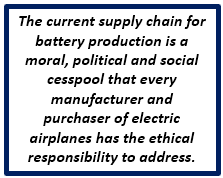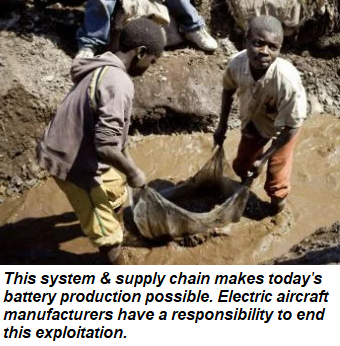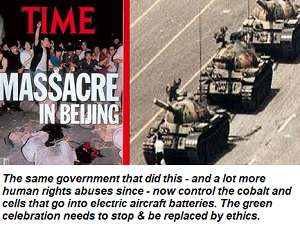Electric Airliners… When The CO2 Cheering Is Over,
How ‘Bout The Unintended Operational & Moral Issues?
Warning. We are going to the edge on this Insight… and maybe a couple of centimeters beyond. It can be a bit touchy challenging not only trendy thinking, but industries that represent billions of dollars in new investment, let alone a swooning me-too media.
But these points are valid and need to be addressed – NOW – by the US airline industry. Let’s dig…
________________
The rush to electric airliners is on. Two more small airlines have joined a couple of big network carriers in making big commitments.
See, these small flying machines will emit no CO2 emissions. In addition, somehow this seems to have created expectations of a whole new set of air service sector possibilities, with skies blackened with air taxis and short-haul commuter airliners zipping between places not served today. The assumption seems to be if you toss it in the sky, people will use it, especially if it’s green.
Could be. All through the magic of battery power.
But in the roaring green din of excitement over these flying machines, the builders, the purchasers, the operators, and the airports involved have huge moral responsibilities. Responsibilities that, unfortunately, have been swept under the ethics carpet so as not to spoil the vision of “exhaust-less” air transportation.
First, These Mostly Are Not Replacing Fossil-Fueled Aircraft. As we’ve pointed out in recent Monday Insights and on our Aviation Unscripted video series, by and large there  won’t be any major reduction in greenhouse gasses. That’s because in most intended applications they aren’t replacing fossil-fuel machines… just implementing new ways of using the sky to transport people.
won’t be any major reduction in greenhouse gasses. That’s because in most intended applications they aren’t replacing fossil-fuel machines… just implementing new ways of using the sky to transport people.
But there is another big issue that needs to be addressed somewhere between the grand announcements of worshiping the Goddess of Green.
Let’s Have Some Answers. Clean Exhaust. But A Lot of Environmental & Social Damage To Get There. We are referring to the moral question of the power source of these lauded future aircraft.
Existing battery technology and current channels of battery production.
Sorry to pop trendy bubbles, but based on current and foreseeable technology, battery power is not “sustainable” energy. They are made with things mined out of the ground. Just as is petroleum. But it’s environmentally a lot worse.
 Unlike the oil industry, the supply chains that mine and produce battery components – things like cobalt, lithium, nickel and other rare minerals – are not particularly well-regulated. Matter of fact, they are in large part 21st-century hell-holes, producing minerals at cheap costs on the backs of hapless workers and at the destruction to the very “environment” that the producers of electric machines claim they are protecting.
Unlike the oil industry, the supply chains that mine and produce battery components – things like cobalt, lithium, nickel and other rare minerals – are not particularly well-regulated. Matter of fact, they are in large part 21st-century hell-holes, producing minerals at cheap costs on the backs of hapless workers and at the destruction to the very “environment” that the producers of electric machines claim they are protecting.
There’s A Supply Chain Threat – Included At No Extra Cost. For one example, 70% or more of the cobalt that goes into batteries comes from sweatshop near-slave mines in Africa, and most of them are controlled by the Chinese Communist Party. These are the folks that brought us Covid, the deadly global pandemic, cultural genocide in Xinjiang, and the crushing of democracy in Hong Kong. And the “go” in most of our batteries is dependent on these criminals.
Don’t look away, folks. Working conditions to get that cobalt out of the ground could make Sinclair Lewis come back from the Great Beyond to craft another best-seller. (Google it, if you must.)
It’s got it all for a best selling exposé. Tragic child labor. Minuscule pay. No worker rights. Government corruption. Dangerous working conditions. People who should know better turning a blind eye. A 21st century sweat-shop system delivering low-cost cobalt for EV batteries and soon electric air taxis, whooshing people pollution-free across the New York Metro area. Wondrous convenience for the consumer – at terrible human and environmental expense to make it possible.
Then there is lithium. It takes enormous amounts of water to produce lithium. That can have an environmental impact. And then it takes a lot of fossil fuel to transport it to the place where most of the finished processing is done. You guessed it, China. Those facilities aren’t exactly Teamster shops, either. And, like cobalt, the supply chain can be choked off anytime one of the CCP Dons may find it politically expedient.
Spent Batteries May Be As Big A Problem As Spent Powerplant Uranium Rods. And after these new aircraft have flown a few years in the sky, the batteries need to be replaced. Oops, as of today there does not seem to be a clear understanding of how all these worn-out – and environmentally unfriendly – batteries are to be recycled.
 This is not to state that non-polluting machinery, be it a lawn mower or a 50-seat short-haul airliner, are not positive developments. But as of today, there are no clear answers to the mess that batteries are fixin’ to dump on the environment and the supply uncertainties facing operators of such machinery. As a clear indication of just how far in la-la land this has gone, there have actually been suggestions inside the Marble Playpen (Congress & White House) that military equipment might be best converted to clean, non-polluting electric power.
This is not to state that non-polluting machinery, be it a lawn mower or a 50-seat short-haul airliner, are not positive developments. But as of today, there are no clear answers to the mess that batteries are fixin’ to dump on the environment and the supply uncertainties facing operators of such machinery. As a clear indication of just how far in la-la land this has gone, there have actually been suggestions inside the Marble Playpen (Congress & White House) that military equipment might be best converted to clean, non-polluting electric power.
If you’re Selling It or Using It, You Have The Responsibility. Worse, when it comes to the social price and human exploitation that current battery production represents, everyone in the supply and use chains of electric aircraft has the moral responsibility to address this situation openly and aggressively. Ask questions. Recognize and admit where these outrages are. Propose new approaches or new technology. For starters.
Oops. Maybe Without The Human and Environmental Subsidies, Battery Power Is Dead. But in any case, the current battery supply chain and production system is morally unacceptable. In clear fact, the system delivers product at an artificially reduced cost. It’s not beyond distant possibility that in the absence of these social outrages, battery power could be non-economic. As one warning, it was reported that the cost of lithium in the last year has skyrocketed by 900%.
Where To Go From Here. This is not to simply conclude that electric aircraft or vehicles are inherently evil in concept. Much the opposite.
But as it stands now, here’s the bare-bones responsibility of the entities involved in their design, use, applications and environmentally-safe life cycle planning:
Pursue And Achieve Advanced Battery Technology. It’s either pursue new and socially-acceptable technologies that don’t rely on the current mineral supply chains, or addressing and remediating the environmental and social problems with the current supply chain.
Address Battery-Related Safety Issues. Simply put, the handling of a fire on an electric aircraft is very different than the approaches to petro-powered machines. Training? Equipment? Facilities?
Post-Use Recycling. Let’s get beyond the excuse that used lithium-ion batteries can be applied to electrical grids. Maybe. But how much can this absorb as thousands of automobiles and hundreds of airplanes shed their clapped-out battery packs?
Research Future Operational Economics. Maybe it might be an idea to do operational feasibility forecasts based on what-if cost scenarios of electric aircraft. It’s pretty obvious that the current supply chains are riddled with factors that artificially keep production expenses down. (Like, for example, the labor conditions in mines in the Congo.)
Today’s Economics Might Not Be The Same Tomorrow. The entire foundation of electric/battery propulsion isn’t particularly stable. A hard analysis of what the economics of electric airliners might be if these production channels were something closer to “market” rates. Another factor is doing a serious review of the social and political vulnerabilities of the current supply chain. Today, the assumptions in the sales brochures are almost all about performance, not market and economic sustainability.
Heresy! Ignore It! Yes, this is not a subject matter that might be welcome to discuss, particularly with the billions of dollars that are chasing electric machinery.
 But any entity that is planning on spending tens of millions on electric aircraft, and doesn’t have clear answers to solving these issues has a very real moral problem.
But any entity that is planning on spending tens of millions on electric aircraft, and doesn’t have clear answers to solving these issues has a very real moral problem.
To put it gently.
We covered this in our Airports Unscripted video series a couple weeks ago. We were outlining these issues and asking for answers. Which did not come, by the way.
Take 9 minutes for some insight and watch the video, if you haven’t done so. Click here to take a look.
_______________